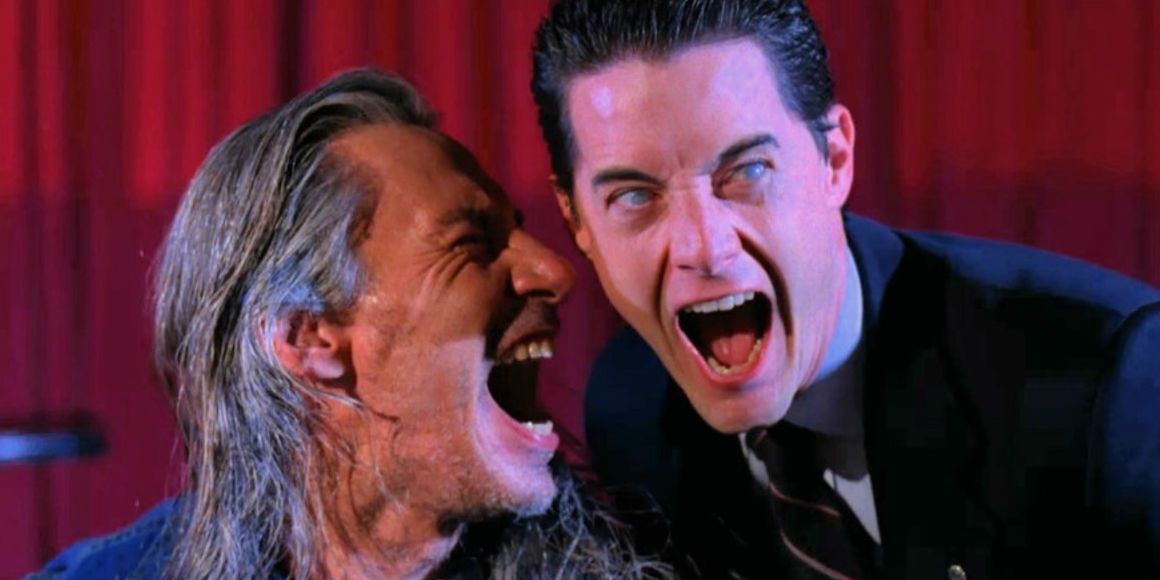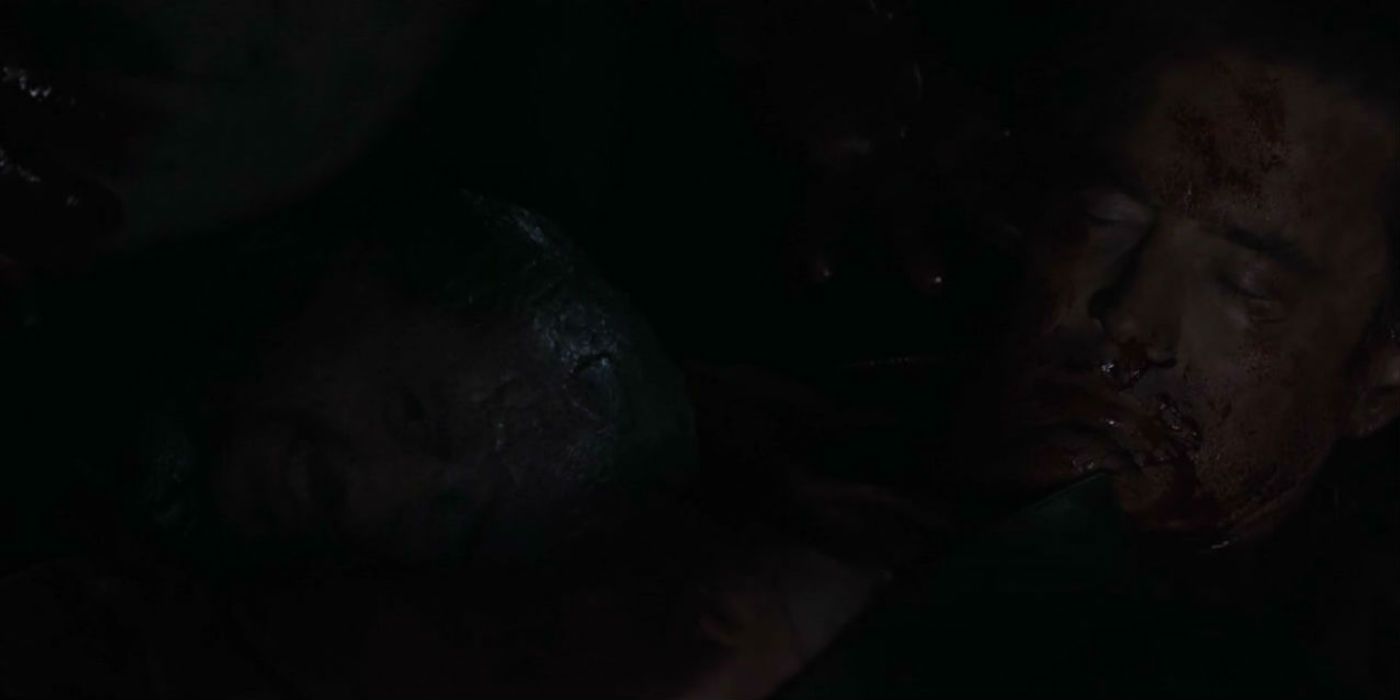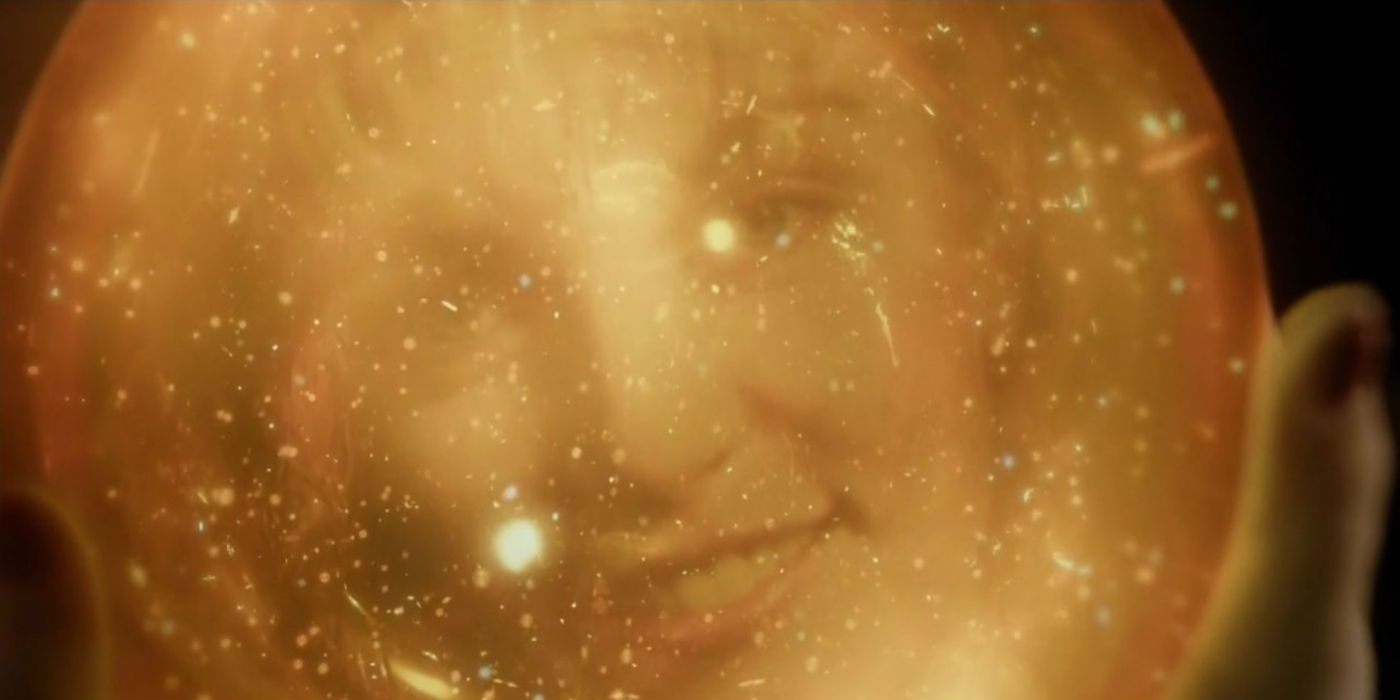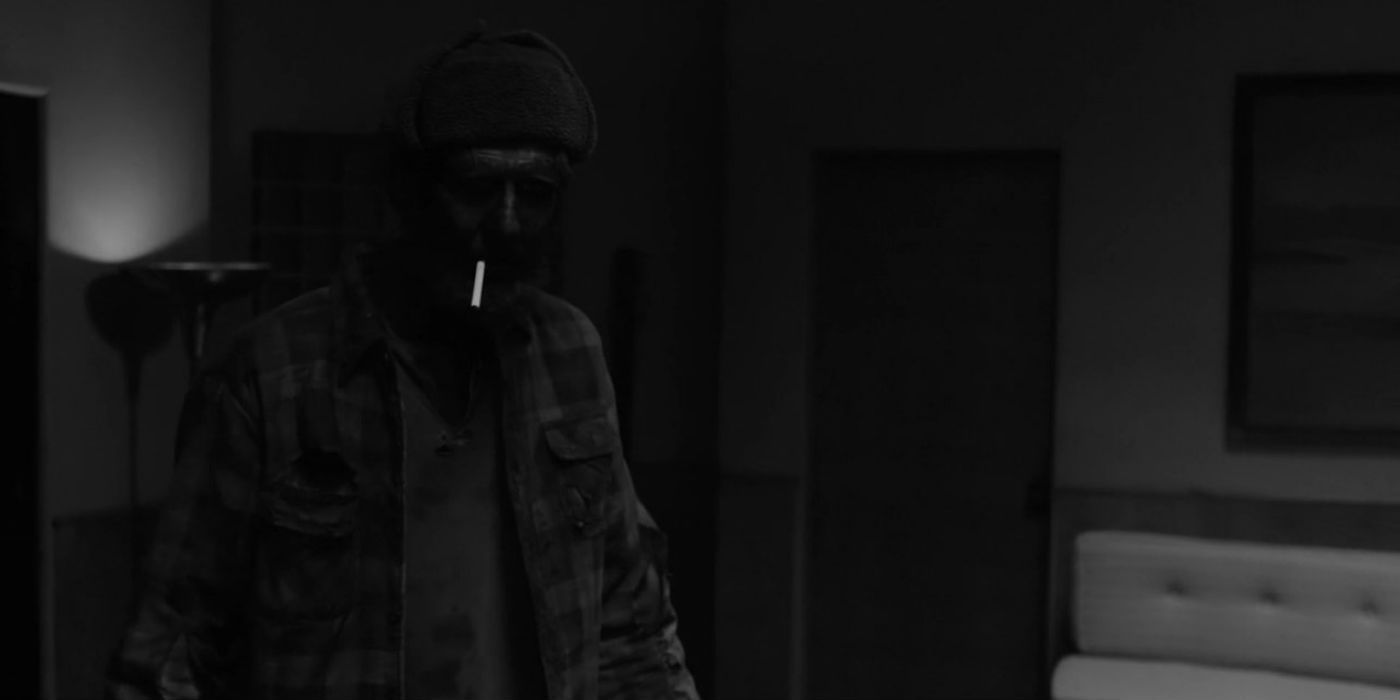The longer Twin Peaks rolls on, the more it seems like a culmination of David Lynch’s career. Part 8 was certainly the most Lynchian, comparable to Eraserhead and Inland Empire in its complicated narrative that exists on the event horizon of chaos between dream and nightmare. An understandable complaint against the revival is that it has too many Lynchian elaborations and doesn’t quite feel like the series we remembered. While Part 7 definitely felt more like home (it at least spent time in the titular northwestern town), Part 8 was the most complicated and inaccessible episode of the series to date. It’s also, somehow, one of the clearest and certainly the most important. It tells us the story of BOB.
You could say that evil—fictional or real—only has two origin stories to choose from: natural or man-made. Revealed, either one could be a letdown. Many writers have often given their villains some sort of origin story that ends up negating their character’s evil in some way. But the reveal of BOB doesn’t undermine the character’s evil or mystery, and, thankfully, doesn’t answer the elemental question of BOB’s existence.
To connect the revival even more to Lynch’s work, there is a line by a character in Inland Empire played by Grace Zabriskie, herself a Twin Peaks cast member. She appears at the very beginning of the film to tell this anecdote: “A little boy went out to play. When he opened his door, he saw the world. As he passed through the doorway, he caused a reflection. Evil was born. Evil was born, and followed the boy.” This is the story of BOB. Previous episodes had made use of the imagery of the atomic bomb tests, and it finally paid off in Part 8. We see the successful test followed by the creation of BOB.
Following the atomic bomb test, the same female entity we originally met in Part 2 (the one who emerged from the Glass Box to kill the lovers in New York) is seen vomiting a string of protoplasmic, placental eggs. One of these eggs, blacker than night, contains BOB’s face. It is unclear if the atomic explosion created BOB’s mother, though we know through secondary Twin Peaks materials that the Black Lodge existed long before the atomic bomb. The mystery of natural evil or man-made evil is left opaque, which in itself is an answer. In Twin Peaks, nothing is simple, nor is the nature of evil. In the most likely case, Mother was already an existing evil that was given access to our plain of existence thanks to the bomb test. This would mean that, at least in this case, evil only begets evil.
Following the test, we see the Woodsmen surrounding a convenience store - possibly the one that Judy lived above. Given their appearances throughout the franchise and their involvement in BOB/Cooper in Part 8, it’s likely that the Woodsmen are parasitic entities that, like moths to light, are attracted by the evils committed by the entities of the Black Lodge who feed off of garmonbozia (pain and suffering). This would explain their appearances in the jail cell next to William Hastings, near the autopsied and beheaded Garland Briggs, and their swarming of BOB/Cooper after he was shot. Of course, they couldn’t feed off him because, despite taking fatal wounds, BOB cannot be killed - at least not by a schmuck with no taste like Ray Monroe.
The Woodsmen pull BOB from the doppelganger of Cooper, leaving the two separated and now creating two antagonists where there was only one. The Woodsmen may want to feed on the more-evil BOB, or they are working to protect him so they can continue to feed off the carnage he instigates. This could also mean that the Doppelganger of Cooper may not be able to function as he did before without BOB supplementing him. After all, the Doppelganger was pleased when he saw BOB in the mirror, still riding co-pilot when he was in prison.
One last note on the nature of Woodsmen: they are covered in soot. In The Secret History of Twin Peaks, it is established that in 1902, the two primary logging families--the Martells and the Packards--were feuding. Labor disputes turned into a logjam and a fire began that killed eight (about the same number of Woodsmen we've seen) on the same date Laura Palmer would be killed decades later. It's possible that they were killed and corrupted by the Black Lodge.
Next Page: [valnet-url-page page=2 paginated=0 text='The%20Giant%20and%20the%20Girl']
Elsewhere, we go to the same dark compound along the black ocean that Cooper landed in on Part 3 where he met the blind woman and Ronette Pulaski/American Girl. It’s possible that the “mother” that she warned Cooper about was the Mother entity who created BOB. We can also only speculate at this moment that the compound is actually the White Lodge that Windam Earle and Garland Briggs had mentioned in the original series, as the entities that reside there seem to be benevolent. The nature of BOB’s evil alerts them as he enters the world. Carel Struycken, who plays the Giant, is simply credited as “???????” here, so it’s unclear if these characters are meant to be related or not. Regardless of his identity, the Giant creates a life as well, using a similar method that the Mother used to make BOB. However, the energy the Giant releases is golden, and one golden orb appears bearing the face of Laura Palmer. Finally, the truth of the Twin Peaks mythology is laid bare.
The Giant created Laura Palmer as the good to oppose BOB’s evil. This explains BOB’s fixation upon Leland and Laura: why he tortured her for a decade and why he wanted to possess - and, when that failed - kill her. It also explains why Laura’s soul has torn apart in Part 1; she is the only person capable of destroying BOB. It’s likely that the latter half of the series will be Cooper’s journey to find Laura and stop BOB once and for all.
The energies created by the Giant are akin to a soul (a version of this energy was seen leaving the boy who was run over by Richard Horne in Part 6). The golden orb that contained Laura is a larger version of the one that the Mike recovered from Dougie Jones. Since Dougie was merely a vessel and Cooper is running around without his memory, it’s possible that the golden orb is his soul. Recovering that would make Cooper Cooper again.
In 1956, the BOB egg hatches in New Mexico where the bomb had gone off eleven years before. What emerges is a locust-frog hybrid, which is as Biblically ominous as you can get. It also ties this Biblical mythology with the American one. The dark power of God and the dark power of Man who was created by God. This Möbius Strip-like cyclicality figures perfectly into the series’ beliefs on evil, reflection, and duality. The locust-frog looks for a body to inhabit just as the Woodsmen arrive. One of them (played by a nightmare-inducing Robert Broski) repeatedly growls an incantation over the radio:
This is the water, and this is the well
Drink full, and descend
The horse is the white of the eyes and dark within
The chant seems to imply the corruption of the spirit (BOB trying to corrupt Laura, and succeeding in corrupting Leland and Cooper). The verse seems to reference the darkness within something that appears innocent but is not. The incantation causes those who hear it to pass out, including a young girl who just returned home from her first date with a boy. Now vulnerable, the locust-frog enters her body through her mouth. The identity of the girl is unclear, though the timeline does make it possible that the girl and her date are Sarah and Leland. It would explain Sarah’s vague second-sight (maybe it’s an ethereal residue) and her own visions of a pale horse, and Leland’s early encounters with BOB. After all, from what we learned through Laura, you can’t always see the host, only the true face. While the continuity gets murky here, we've seen through The Secret History of Twin Peaks and in the series itself, that Lynch and Frost have no problem playing fast and loose with time and canon.
It’s also not entirely unrelated to the desperation in Twin Peaks’ other favorite refrain:
Through the darkness of futures past
The Magician longs to see
One chance/chants out between two worlds:
Corruption, desperation and being stranded are common themes in Twin Peaks. They have not, until these most recent episodes, entwined themselves so completely. We’re just shy of the halfway point of the series, and while this episode is among the most baffling, it is the most rewarding. We wanted answers, and they came in the form of more questions. The puzzle pieces all match what Twin Peaks is about—this kaleidoscopic and undulating exploration of nature, and the duality of human frailty and evil. The answers to complicated questions shouldn’t be simple, but finally, they are here.




